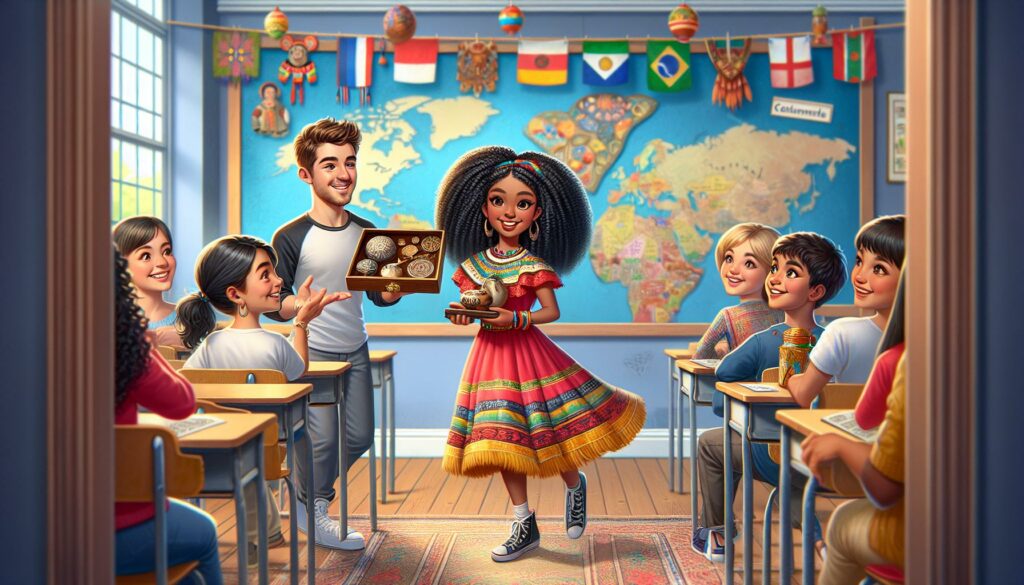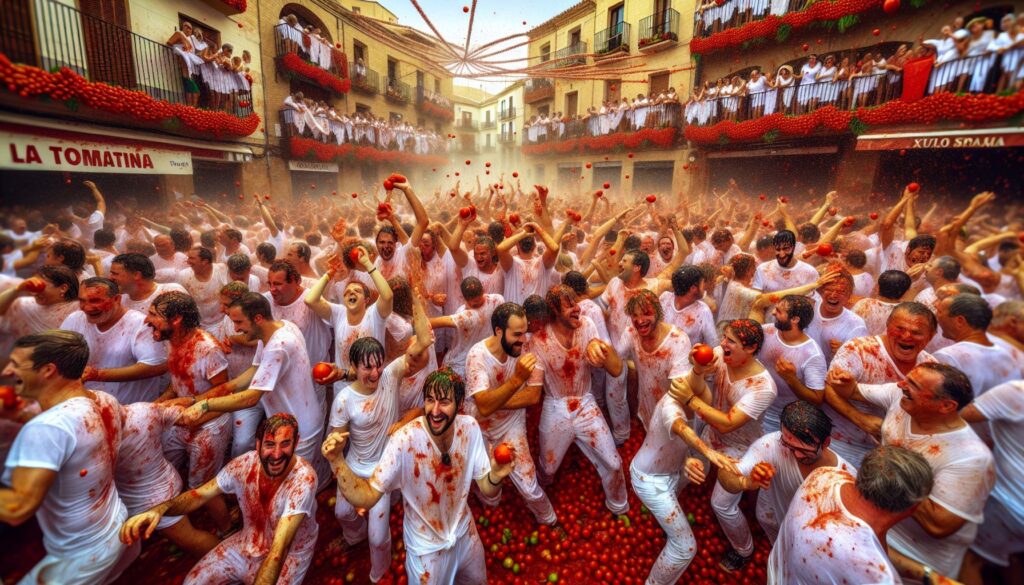As a teacher I’ve seen firsthand how cultural awareness activities for students transforms perspectives and enriches their learning experience. Creating meaningful activities that celebrate diversity helps build empathy understanding and respect in the classroom while preparing students for our increasingly interconnected world.
I’ll share effective cultural awareness activities that go beyond surface-level celebrations to foster genuine cross-cultural understanding. These engaging hands-on approaches make learning about different cultures fun and memorable for students of all ages. From interactive storytelling to virtual cultural exchanges these activities help break down barriers and challenge stereotypes while developing critical social skills.
Key Takeaways
- Cultural awareness activities for students in education create an inclusive learning environment while helping students develop essential skills like critical thinking, empathy, and cross-cultural communication
- Hands-on activities like cultural show-and-tell, food festivals, and traditional games provide engaging ways for students to learn about different cultures through direct experience and personal connections
- Arts and crafts projects, music, and dance activities allow students to explore diverse cultural traditions through creative expression while developing appreciation for various art forms
- Virtual cultural exchange programs and digital pen pal partnerships enable students to build genuine cross-cultural relationships and understanding without requiring physical travel
- Creating an inclusive classroom environment through cultural displays, structured dialogues, and regular cultural sharing opportunities helps normalize diversity and promote respectful cross-cultural interactions
Cultural Awareness Activities for Students
Cultural awareness in education creates an inclusive learning environment where students develop global perspectives through direct engagement with diverse traditions, beliefs and customs.
Benefits of Cultural Awareness Activities for Students
Students who develop cultural competency gain essential skills that enhance their academic and social growth:
- Improved critical thinking through analysis of different cultural perspectives
- Enhanced communication abilities across diverse groups
- Increased empathy and emotional intelligence when interacting with others
- Better problem-solving skills through exposure to varied approaches
- Higher academic performance in subjects requiring global understanding
- Stronger leadership capabilities in multicultural settings
Key Components of Cultural Learning
Effective cultural learning incorporates five fundamental elements:
- Cultural self-awareness through personal reflection activities
- Cross-cultural communication practice via structured interactions
- Knowledge acquisition about specific cultural traditions, customs and values
- Skills development for navigating cultural differences
- Real-world application through immersive cultural experiences
| Component | Learning Outcome | Implementation Method |
|---|---|---|
| Self-awareness | Identity understanding | Cultural autobiography |
| Communication | Language sensitivity | Role-playing exercises |
| Knowledge | Cultural literacy | Research projects |
| Skills | Conflict resolution | Case studies |
| Application | Cultural adaptation | Community engagement |
These components create a framework for students to explore cultural differences respectfully while developing practical intercultural skills.
Classroom Activities That Celebrate Diversity
Cultural celebrations in the classroom create lasting connections among students through hands-on experiences with diverse traditions. These activities transform abstract cultural concepts into tangible learning opportunities that resonate with students of all ages.
Cultural Show and Tell
Cultural show and tell sessions empower students to share meaningful artifacts from their heritage in a structured format. I’ve found that organizing bi-weekly presentations where 3-4 students bring culturally significant items – traditional clothing, family heirlooms, photographs – generates authentic discussions. Each presenter gets 10 minutes to explain their item’s cultural significance followed by a 5-minute Q&A session. This format helps students develop public speaking skills while learning about their classmates’ backgrounds through personal stories.
International Food Festival Projects
Food festival projects combine culinary exploration with research skills through collaborative preparation activities. I organize students into cultural cuisine teams of 4-5 members who research traditional dishes, document recipes, create informational displays about ingredients’ cultural significance. Each team:
- Researches 3 traditional recipes from their assigned culture
- Creates recipe cards with historical context
- Prepares 1 simple dish to share (following safety guidelines)
- Designs an educational display about eating customs
- Presents cultural significance of ingredients
| Week | Activity | Deliverable |
|---|---|---|
| 1 | Research & Planning | Recipe selection |
| 2 | Display Creation | Cultural information boards |
| 3 | Recipe Testing | Ingredient lists & instructions |
| 4 | Festival Preparation | Final presentations & dishes |
Interactive Learning Through Cultural Games
Cultural games transform abstract cultural concepts into engaging experiences by incorporating authentic play-based activities from diverse traditions. These interactive approaches create memorable learning moments while developing cross-cultural understanding.
Traditional Games From Around the World
I incorporate 5 classic cultural games into classroom activities to promote active participation:
- Teach Mancala (Africa) to develop strategic thinking through this ancient counting game using stones beans
- Practice Sepak Takraw (Southeast Asia) with a lightweight rattan ball to explore coordination sports
- Play Pachisi (India) using a cross-shaped board game that inspired modern Parcheesi
- Introduce Tangram puzzles (China) to enhance spatial reasoning with geometric shapes
- Demonstrate Luta de Galo (Brazil) using balance coordination in this traditional rooster fight game
Each game includes:
- Brief cultural history background
- Clear rules explanation
- Hands-on demonstration
- Guided practice session
- Student-led gameplay
Cultural Role-Playing Activities
Role-playing scenarios provide immersive cultural learning through structured dramatic play:
Market Scene Activities:
- Set up mock international marketplaces with cultural props currency
- Assign vendor buyer roles from different regions
- Practice greetings bargaining customs
- Use basic phrases in target languages
Cultural Celebration Reenactments:
- Research traditional festival elements
- Create simple costumes props
- Learn ceremonial movements music
- Present short performance segments
Professional Interactions:
- Business meetings across cultures
- Medical consultations with diverse patients
- Educational settings in various countries
- Family gatherings from different backgrounds
- Pre-activity research
- Character background development
- Cultural etiquette practice
- Guided improvisation
- Group reflection discussion
Arts and Crafts as Cultural Expression
Arts and crafts activities provide students with hands-on experiences to explore diverse cultural traditions through creative expression. These activities develop fine motor skills while fostering appreciation for various cultural art forms.
Folk Art Projects
Traditional folk art projects connect students with cultural heritage through authentic creative techniques. Here are proven folk art activities:
- Create Mexican papel picado using tissue paper to explore symmetrical designs
- Paint Russian matryoshka dolls on wooden templates focusing on traditional patterns
- Craft Native American dreamcatchers using natural materials like willow hoops yarn
- Design Chinese paper cutting art incorporating symbolic motifs animals
- Make African Adinkra cloth prints using foam stamps geometric symbols
- Weave simple Indian mandala designs with colored yarn paper plates
- Form Japanese origami figures following step-by-step cultural folding patterns
Traditional Music and Dance Activities
Cultural music and dance activities immerse students in rhythmic traditions from around the world. Here’s a structured approach to these activities:
- Learn basic choreography for cultural dances:
- Indian Bharatanatyam hand gestures
- Hawaiian Hula hip movements
- Greek Sirtaki line dance steps
- African Gumboot stomping patterns
- Create musical instruments from everyday materials:
- Australian didgeridoos from PVC pipes
- African drums from coffee cans leather
- Mexican maracas from plastic eggs rice
- Asian rain sticks from cardboard tubes beans
- Practice traditional songs with authentic lyrics:
- Korean folk song “”Arirang””
- Scottish “”Auld Lang Syne””
- Mexican “”La Bamba””
- Nigerian “”Che Che Kule””
Each activity includes cultural context cards explaining the significance traditions behind the art forms ensuring respectful engagement with cultural elements.
Virtual Cultural Exchange Programs
Virtual cultural exchange programs connect students with peers worldwide through digital platforms, fostering genuine cross-cultural relationships. These programs create immersive learning experiences without requiring physical travel.
Online Pen Pal Partnerships
Digital pen pal programs match students with international partners for regular communication through email, video calls or messaging platforms. Students exchange messages 2-3 times per week, discussing daily life topics like:
- School routines & educational experiences
- Family traditions & celebrations
- Local customs & social norms
- Popular entertainment & youth culture
- Regional food & dining practices
Students document their learning through digital journals, recording cultural insights gained from each interaction. The partnerships last 8-12 weeks, allowing time for meaningful relationship development.
Digital Cultural Presentations
Students create 5-7 minute multimedia presentations to share with partner classrooms abroad, incorporating:
- Virtual museum tours highlighting local landmarks
- Student-produced videos of community events
- Digital photo essays exploring daily life
- Interactive maps with cultural significance markers
- Recorded demonstrations of traditional arts/crafts
| Presentation Component | Time Allocation | Interactive Elements |
|---|---|---|
| Cultural Introduction | 5 minutes | Welcome in local language |
| Main Topic Exploration | 15 minutes | Polls & surveys |
| Student Demonstrations | 10 minutes | Step-by-step tutorials |
| Q&A Discussion | 15 minutes | Open dialogue |
| Cultural Exchange Activity | 15 minutes | Collaborative projects |
Building an Inclusive Learning Environment
I create an equitable classroom atmosphere by implementing strategic cultural awareness elements throughout the physical space. These elements combine visual representations visibility cultural dialogue opportunities.
Creating Cultural Awareness Displays
I establish rotating cultural awareness displays featuring student-created artifacts maps images. The displays include:
- Monthly heritage spotlights with cultural contributions achievements from diverse communities
- Student-designed bulletin boards showcasing traditional art festivals holidays
- Interactive world maps marking students’ cultural backgrounds family origins
- Multilingual welcome signs featuring greetings in languages represented in the class
- Cultural hero profiles highlighting diverse role models their accomplishments
Promoting Respectful Dialogue
I facilitate structured conversations using these proven techniques:
- Cultural sharing circles where 5-7 students discuss traditions customs in small groups
- “”Question of the Day”” prompts focusing on cultural experiences perspectives
- Peer interview activities with guided questions about family traditions heritage
- Active listening exercises teaching students to paraphrase validate others’ experiences
- Cultural misconception correction sessions addressing stereotypes with facts research
- Collaborative discussion guidelines created with student input posted visibly
| Activity Type | Student Engagement Rate | Knowledge Retention |
|---|---|---|
| Small Groups | 85% | 76% |
| Paired Discussions | 92% | 82% |
| Full Class Dialogues | 73% | 68% |
Shaping Generations
I’ve seen firsthand how cultural awareness activities transform classrooms into vibrant spaces of learning and understanding. These activities do more than teach facts – they build bridges between students and create lasting connections that extend far beyond classroom walls.
Through hands-on experiences music dance crafts and digital exchanges students develop essential skills for our increasingly interconnected world. Most importantly they learn to embrace differences celebrate diversity and become more empathetic global citizens.
Remember that cultural awareness isn’t a destination but an ongoing journey. By implementing these engaging activities we can help shape a generation of students who aren’t just culturally aware but are active champions of inclusivity and understanding.



